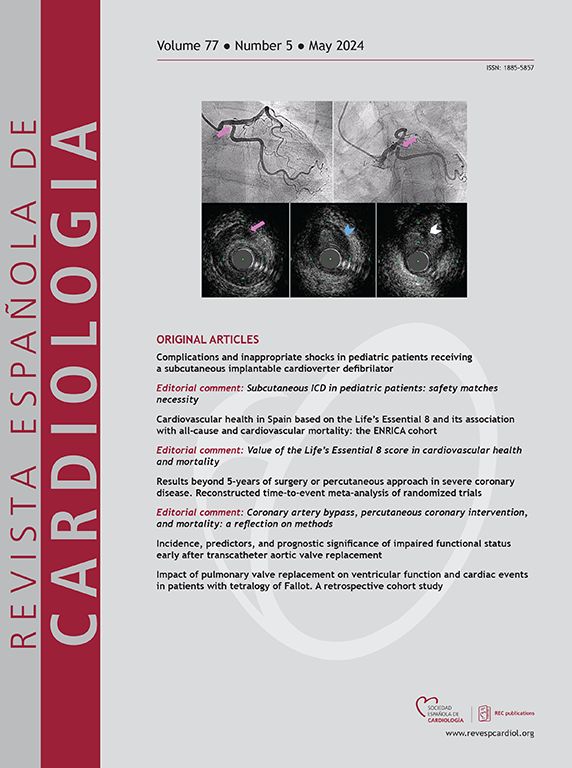心脏移植中预测预后的生物标志物的效用
IF 5.9
2区 医学
Q2 Medicine
引用次数: 0
摘要
导言和目的心脏移植(HT)是一种重大的生理压力,会导致分析性生物标志物水平升高。本研究旨在确定心脏移植术后生物标志物水平的变化是否能识别预后不良的患者。方法从 2017 年 7 月至 2023 年 7 月,对 149 名连续接受心脏移植术的患者进行了前瞻性纵向非干预研究。在 HT 前以及 HT 后 6、24、48、72 和 96 小时对生物标志物进行了评估。分析的生物标志物包括高敏肌钙蛋白 T、N-末端前 B 型钠尿肽(NT-proBNP)、肌酐和乳酸。结果NT-proBNP和肌钙蛋白水平在整个过程中一直高度升高,并在HT术后24小时内趋于稳定。乳酸水平在头 24 小时后趋于稳定,肌酐则从第二天起趋于稳定。有 23 名患者(15%)出现了呕吐,26 名患者(17%)出现了严重的 PGF。所有生物标志物都与合并事件的发生率有明显相关性(P < .0001)。24 小时的接收者操作特征曲线分析显示曲线下的面积很大(P = .0001)。NT-proBNP 曲线的判别能力最强。结论 HT 后分析生物标志物的显著升高与死亡率和/或严重 PGF 有关。在分析的生物标志物中,NT-proBNP 在对患者进行分类方面最为准确。本文章由计算机程序翻译,如有差异,请以英文原文为准。
Utilidad de los biomarcadores en el trasplante cardiaco para predecir el pronóstico
Introduction and objectives
Heart transplant (HT) represents a major physiological stress, resulting in elevated levels of analytical biomarkers. This study aimed to determine whether changes in biomarker levels after HT can identify patients with a poor prognosis.
Methods
A prospective longitudinal noninterventional study was conducted in 149 consecutive patients undergoing HT from July 2017 to July 2023. Biomarkers were assessed before HT and at 6, 24, 48, 72, and 96 hours after HT. The biomarkers analyzed were high-sensitivity troponin T, N-terminal pro-B-type natriuretic peptide (NT-proBNP), creatinine, and lactic acid. The primary outcome was a composite of death and severe primary graft failure (PGF).
Results
NT-proBNP and troponin levels remained highly elevated throughout the period and stabilized from the first 24 hours post-HT. Lactate levels stabilized after the first 24 hours, and creatinine from the second day onward. Exitus occurred in 23 (15%) of the patients, and severe PGF in 26 (17%). All biomarkers were significantly associated with the incidence of the combined event (P < .0001). Receiver operating characteristic curve analysis at 24 hours showed significant areas under the curve (P = .0001). The greatest discriminatory power was observed for the NT-proBNP curve. A value of 10 000 pg/mL had a sensitivity of 90% and specificity of 80%.
Conclusions
A significant elevation of post-HT analytical biomarkers was associated with mortality and/or severe PGF. Among the biomarkers analyzed, NT-proBNP was the most accurate in classifying patients.
求助全文
通过发布文献求助,成功后即可免费获取论文全文。
去求助
来源期刊

Revista espanola de cardiologia
医学-心血管系统
CiteScore
4.20
自引率
13.60%
发文量
257
审稿时长
28 days
期刊介绍:
Revista Española de Cardiología, Revista bilingüe científica internacional, dedicada a las enfermedades cardiovasculares, es la publicación oficial de la Sociedad Española de Cardiología.
 求助内容:
求助内容: 应助结果提醒方式:
应助结果提醒方式:


